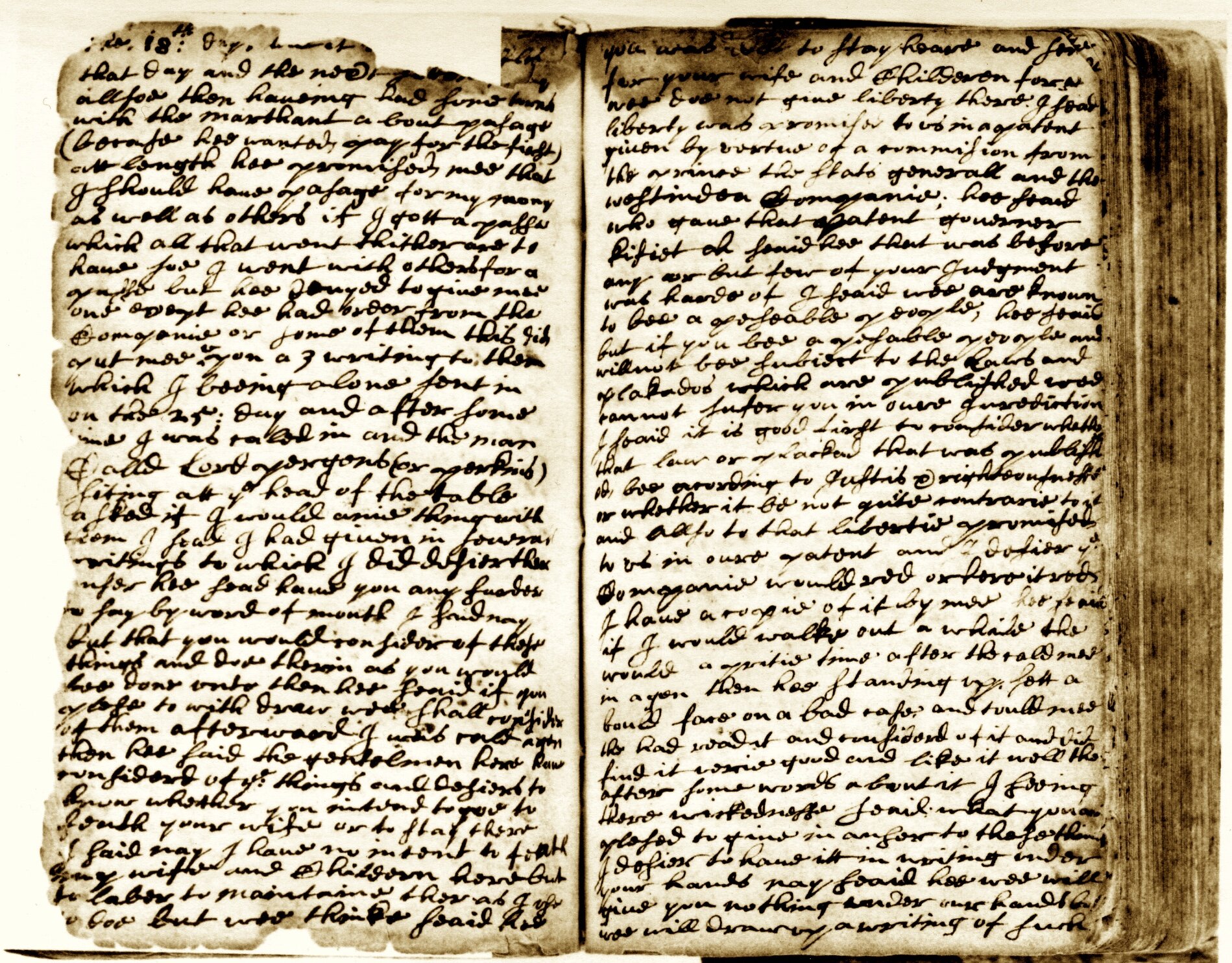The Story of John Bowne’s Trial
From September 1662 to March 1664 John Bowne recorded his own ordeal on behalf of religious freedom in his personal journal. In this blog, Bowne House archivist Charlotte Jackson and our research team will present Bowne’s story as it springs from the pages of the 17th-century manuscripts. His first-person account is complemented by other voices of his time, ranging from the edicts of New Netherland’s Director Peter Stuyvesant to the correspondence of Quaker leader George Fox. We invite our community to follow the saga of Bowne’s arrest, trial, imprisonment, exile, appeal, and homecoming- in his own words.
JOHN BOWNE’S JOURNAL
11 SEPTEMBER 1662
John and his wife Hannah belonged to the Religious Society of Friends, popularly known as “Quakers.” In 1662, the couple were hosting Quaker Meetings in the newly constructed Bowne House. However, only the Dutch Reformed Church was legally permitted to hold public worship services in New Netherland. The Quaker faith had been outright banned by Peter Stuyvesant, Director-General of New Netherland- this despite a guarantee of “liberty of conscience” in the Flushing Town Charter. Eventually the magistrates from neighboring Rustdorp (today Jamaica, Queens) informed on Bowne, and he was arrested and put on trial in New Amsterdam. Bowne refused to recant, pay a fine, or agree to discontinue meetings, instead choosing to endure several months of imprisonment, at times on a bread and water diet. In January 1663 he was exiled aboard ship to Europe. Undaunted, he made his way to Amsterdam to appeal his case before the Board of the Dutch West India Company. He carried with him a copy of the Flushing Charter, with its promise of “liberty of conscience.” Although the Directors never gave him the full public endorsement of free worship that he sought, they did rebuke Stuyvesant in writing and order him to cease persecution of the Quakers. Bowne’s challenge to Stuyvesant thus led to an early affirmation of the principle of tolerance in the New World. Bowne was able to return to his family via an arduous eight-month ocean voyage that detoured through the West Indies. Upon his return, he hosted the Flushing Quaker Meeting for the next thirty years, supplied the land for the Quaker Burial Ground, and managed the construction of the Flushing Friends’ Meeting, still an active house of worship today. Generations of his descendants lived in the Bowne House, preserving their ancestor’s legacy and his commitment to “liberty of conscience” until 1945. You can learn more about the house and family on our Bowne House History page.

